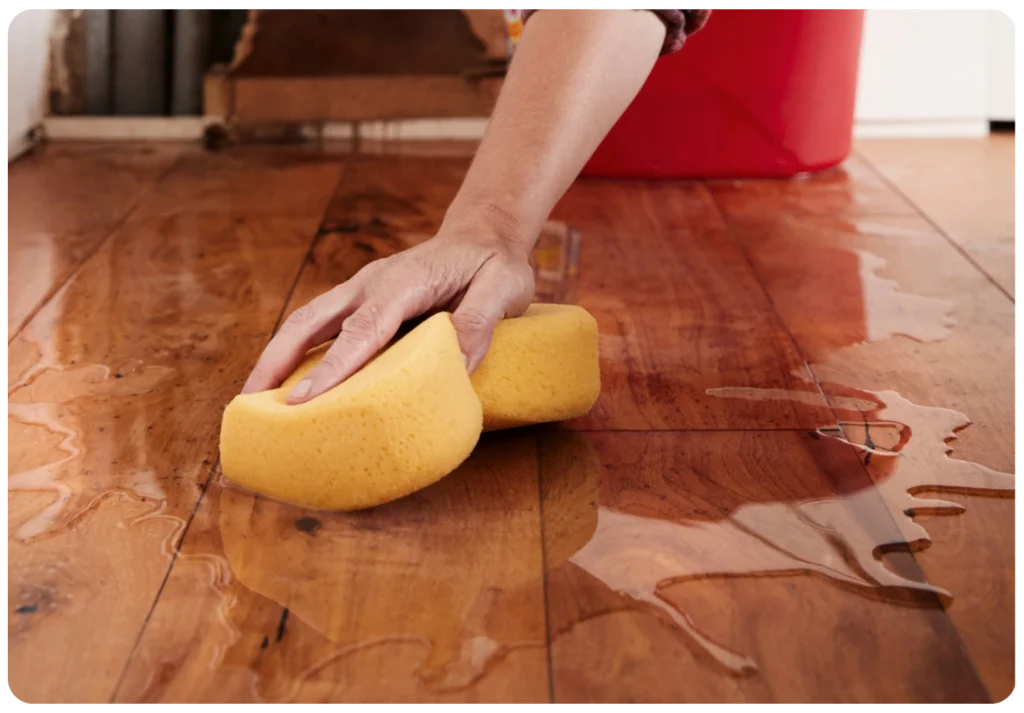You walk into your apartment one day and see that it’s flooded. There’s water pooling on the floor and soaking your belongings, leaving you wondering what to do next. Whether it’s from a burst pipe or heavy rain, a flooded apartment can cause serious stress and damage. It might sound extreme, but it can happen to anyone.
In this blog, you’ll learn whether tenant insurance covers a flooded apartment, the difference between your and your landlord’s insurance, and what to do right to avoid further damages and paying out of your own pocket.

Will tenant insurance cover a flooded apartment?
Yes, tenant insurance can cover a flooded apartment, but it depends on the source of the water and whether you have the appropriate form of water coverage included in your policy.
A standard tenant insurance policy typically covers sudden or accidental water damage that comes from:
- Firefighting efforts
- Sudden plumbing failures
- Toilet overflows
- Household appliances like washing machines or dishwashers (the resulting water damage is covered, but repairing or replacing the faulty appliance usually isn’t)
However, some types of water damage require additional coverage, such as overland flooding coverage, above-ground water coverage, and sewer backup coverage. These protections are not usually included in a standard policy, so you’ll need to add them separately if you want coverage for those specific risks.
If everything checks out and your claim is approved, tenant insurance can help pay for:
- The cost of repairing or replacing your damaged personal belongings (like furniture, electronics, and clothing)
- Additional living expenses if your apartment becomes uninhabitable (such as hotel stays or meals)
Do landlords pay for flood damage?
If the flooding wasn’t your fault, your landlord is typically responsible for repairing damage to the structure and permanent fixtures of the apartment. They should have landlord insurance, which can help cover damage to structural elements like walls, floors, ceilings, drywall, and insulation, as well as permanent fixtures such as cabinets, countertops, and built-in appliances caused by flooding.
What landlords—and their insurance—don’t cover is any damage to your personal belongings. To have those covered, you’ll need a tenant insurance policy in your name that includes the appropriate coverage for the type of water damage. For example, if the sewers in your building backed up and flooded your apartment, you’d need sewer backup coverage to be eligible for compensation for your damaged items.
However, if you or one of your guests does something negligent, careless, or in violation of your lease that causes your apartment to flood, you’ll likely be responsible for covering the cost of repairs to both the apartment and your belongings out of your own pocket.
If you don’t, your landlord could take legal action to recover the costs through your province’s governing body (the Landlord and Tenant Board (LTB) in Ontario and the Tribunal administratif du logement (TAL) in Quebec).
What happens if your apartment floods and you don’t have insurance?
If your apartment floods and you don’t have tenant insurance, here’s what that will likely mean for you:
- Your belongings won’t be covered: Any damaged furniture, electronics, clothing, or personal items will need to be replaced out of pocket.
- You’ll have to pay for temporary housing: If your unit becomes uninhabitable, you won’t get any help with hotel stays or other extra living expenses.
- You could be liable for damage: If the flood was your fault (ex. from an overflowing tub or burst pipe caused by negligence), you might have to pay for repair costs.
Dealing with flood damage without insurance can cost you hundreds, or even thousands, of dollars from your own pocket. Considering how affordable tenant insurance can be, it makes sense to have.
8 tips for dealing with a flooded apartment
Dealing with a flooded apartment can be stressful, but taking action quickly and staying organized can help limit the damage and protect your rights. Whether the flood is minor or severe, follow these steps to get repairs underway faster:
⚠️ Stay safe
Try not to walk through standing water, especially if there’s a risk of electrical hazards. If you think the water could be contaminated or you see exposed wires, leave the unit and wait for professionals to assess the damage.
📞 Notify your landlord
Contact your landlord or property manager immediately and provide a detailed account of the flood. Be sure to mention when the flooding started, the source of the water, and the extent of the damage.
📷 Take photos
Document the damage and the source of the flooding (if possible) by taking timestamped photos. This serves as proof of the unit’s condition and can help you should any disputes arise.
🔔 Contact your insurance company
If the damage exceeds your deductible, notify your insurance provider as soon as possible. However, if the cost of repairs is less than—or only slightly above—your deductible, it may be smarter to pay out of pocket than file a small claim that causes your premium to rise come renewal time.
✍️ Document everything
Keep a record of all communication with your landlord and insurance company. Save all receipts for related expenses, like hotel stays or cleaning supplies, as they’ll probably be reimbursable under your policy.
🧫 Prevent mold growth
After the water is removed, ventilate your unit by opening windows and using fans or dehumidifiers. Act quickly, because mold can start forming in 24 to 48 hours.
❌ Don’t get rid of damaged items right away
Unless dangerous to your health, try to keep any damaged belongings until your claim has been processed. This can verify your claim and help speed up the reimbursement process.
⏰ Address issues before they escalate
Ignoring minor issues can lead to major damage. If you notice something starting to break, like a leaky faucet, loose fixture, or malfunctioning appliance, notify your landlord right away, ideally in writing.




